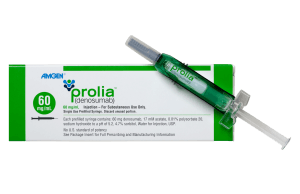 Welcome to our Questions & Answers page about prostate cancer. Prostate cancer is the most common form of cancer diagnosed in men in the US today. It is the second leading cause of death among adult men, after heart disease. In this blog, we will highlight some of the key facts and features of prostate cancer.
Welcome to our Questions & Answers page about prostate cancer. Prostate cancer is the most common form of cancer diagnosed in men in the US today. It is the second leading cause of death among adult men, after heart disease. In this blog, we will highlight some of the key facts and features of prostate cancer.
About enlarged prostates
The prostate is a small gland located at the base of the penis below the bladder. The gland’s primary function is to produce the seminal fluid that protects and transports sperm. In most men who develop prostate problems, the symptoms begin in late adult life. The proportion of men showing up with enlarged prostates is steadily increasing, mainly because men live longer. Luckily, for a large percentage of them – around 75% – the enlarged gland is a benign growth and is not cancerous. Read more about the main features of prostate cancer here.
What are the early symptoms of possible prostate cancer?
The first signs of prostate enlargement may come from a disruption in the flow of urine. Men who need to urinate more frequently at night, experience incomplete evacuation of the bladder with each emptying, notice blood in the urine, have a weak flow of urine (dribbling), or have urinary incontinence should get a rectal exam done.
Most often, the test doesn’t require a visit to a clinic since a urologist or proctologist will perform a standard digital rectal examination in their rooms. Doctors recommend annual or biennial digital rectal examinations for all men over the age of 60 or for anyone who has shown any sign of prostate growth.
What are the particular features of prostate cancer?
Cancer is when normal cells change and grow out of control, forming a tumor. A growing prostate gland constantly replicates new cells, and there is a greater chance that some new cells can turn cancerous. That’s why monitoring the condition is taken very seriously.
Prostate cancers are unusual because they usually grow very slowly. They may not show up with symptoms for many years or, in some cases, may never be detected. Usually, doctors will only prescribe treatment for prostate tumors when there is a risk of it spreading or the gland is growing too big and interfering with regular functions like sex, urination, and bowel movements.
How do we detect the early stages of prostate cancer? 
As we said before, most enlarged prostates are not malignant. Still, the physician may decide that the risks are higher in your particular case, and order more thorough tests. The most straightforward test is the Prostate-specific antigen (PSA) test. PSA is a protein produced by prostate cells in the blood. It can be detected in a simple blood test and is found at higher-than-normal levels in people with prostate cancer or other prostate conditions. It is not a definitive test, and doesn’t measure the level of malignancy.
Further investigation may be required, in which case a doctor may order a biopsy for pathological examination. A tissue sample taken from the gland is examined. Prostate cancer in each sample is categorized according to a protocol known as the Gleason score. The pathologist assesses how different the sample prostate cancer cells are from healthy cells and assigns a score between one and five from two separate places on the sample slide. Healthy-looking cells receive a low score, while more aggressive cells receive a higher score. The two scores are added together, giving an overall score between 2 and 10.
A Gleason score lower than six typically means that the man does not require any therapy for prostate cancer. The lowest Gleason score, indicating low-grade cancer, is six. A Gleason score of seven indicates medium-grade cancer, and anything higher indicates a highly active malignancy that has the potential of spreading (metastasis) into surrounding tissues, and requires active treatment.
What are the survival rates for metastatic prostate cancer?
The five-year survival rate for most men with low-grade prostate cancer (Gleason score less than six) is nearly 100%. However, once it has progressed and starts to spread to other parts of the body, especially in cases of castration-resistant prostate cancer, the five-year survival rate is only 31%. This makes early detection and proper treatment essential.
What happens if you don’t treat metastatic prostate cancer?
Not all cases of prostate cancer require treatment. What is essential is for the progression of the cancer to be regularly monitored by your doctor or a specialist in this field, such as a urologist or proctologist. The basic tests of a rectal examination and PDA blood tests should be performed at least every year or two. If there are signs that the tumor is advancing beyond the first stage, doctors will usually proceed with the primary therapy of testosterone management. However, once a doctor reaches a metastatic prostate cancer diagnosis and there are signs that the cancer is overcoming hormone therapy, it becomes castration-resistant. Initial treatments are usually begun with drugs such as Zoladex or Zytiga, leading up to treatments for aggressive metastatic cancer or hormone-resistant cases with Erleada or Xtandi.
Should men delay cancer treatment for prostate cancer?

What is the longest life expectancy with stage 2 prostate cancer?
A Gleason score of 7 or 8 is also known as stage two prostate cancer. There are still many options at this early stage. The first option is to apply testosterone controls. If the cancer still grows and shows signs of becoming castrate-resistant, then doctors will usually switch over to treatments with Zytiga, Erleada, or Xtandi. It’s vital that the patient’s condition is regularly monitored, so that different therapies can be applied if necessary.
Can you beat metastatic prostate cancer?
There are no complete cures for cancers, and the chances of it simply disappearing if it has been active but untreated are minuscule. However, the symptoms caused by an enlarged prostate caused by cancer may reduce with time, or the patient may become less sensitive and feel that the problem has gone away on its own. It’s still essential to remember that active cancers represent a genuine danger if they start to spread, and the status of the cancer needs to be checked regularly and thoroughly.
Will castration prevent prostate cancer?
Castration involves the surgical removal of the testes, which are the primary producers of testosterone. Testosterone is the trigger hormone required in cell reproduction inside the prostate gland. Most treatments for low-grade prostate cancer work by reducing testosterone levels or blocking its biological path.
However, two other sites in the male body also produce testosterone, although in a much lower volume. These are the adrenal glands and the prostate gland itself. This means that castration is not a completely reliable form of preventing prostate cancer. Zytiga is a preferred option to castration because it suppresses testosterone production at all three sites.














